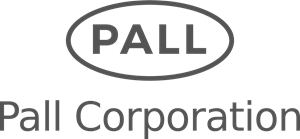The quest to unlock the potential of the Internet of Things is in full force.
At Thingsquare, we regularly meet customers that have built or are in the process of building successful businesses built around the Internet of Things.
In this article we look at three ways that Thingsquare customers are using the IoT to save or make money for their businesses:
- Use the IoT as a tool to optimize internal processes
- Use the IoT add value to an existing product
- Build an entire business around an IoT product
For each category, we look at the typical risk/reward profile for the business cases in that category.
The purpose of this article is to inspire you to see how the IoT can help your organization so that you can take the step to be successful with the IoT.
Salaries are the largest expense for most businesses, and the IoT can be used to make sure that those salaries are well-spent.
Use IoT as a tool to optimize internal processes
Risk: low, reward: high
For most businesses, there is significant amounts of money to be save by optimizing internal processes. Salaries are the largest expense for most businesses, and the IoT can be used to make sure that those salaries are well-spent.
The IoT can help optimize internal processes in several ways:
- Optimize personnel scheduling, by using sensors to know where attention is needed. Example: office plants-as-a-service.
- Make more efficient use of physical assets, by tracking their usage. Example: hot desk usage tracking.
- Improve sales, by learning customer behavior and purchase patterns. Example: shelf monitoring.
In terms of the risk/reward ratio, using the IoT to optimize internal processes has a low risk, but the potential for high reward.
The risk is low, because if the optimization would fail to produce the desired results, the internal process will still be operational. There is very little downside, beyond the effort spent on solution development, but the potential upside can be large, depending on the size of the problem that is being solved.
The key challenge for IoT projects that aims to optimize internal processes is that the business case needs to be aligned with the way that the IoT can help. This usually requires a good understanding of the operation of the business.
The best way to see how the IoT can assist the business case is to run a proof-of-concept deployment in the intended environment, involving the key players. This includes the actual users of the final system, such as personnel and end-customers. Skipping over this step can lead to poor results as the system may not be received by the target users, and the potential optimizations will fail to occur.
In smart gardening, the IoT makes gardening tools such as watering and nutrition dispensers improve the operation of the product but also report vital data that improve the gardening process.
Use IoT to add value to an already successful product
Risk: low, reward: medium
Many IoT products work as an added-value add-on to an already existing product or service. The products that fall into this category frequently use the smart moniker to explain them:
- Smart lighting
- Smart industrial machines
- Smart home
- Smart healthcare
- Smart parking
- Smart buildings
- Smart gardening
In smart lighting systems, the core product is the light that the lighting system brings, and the IoT adds value by reducing the power consumption of the system through intelligent dimming, but also by knowing when to turn on and off the lights. Likewise, the IoT adds value in smart industrial machines by measuring the usage of the machines and predicting when they need maintenance. In smart gardening, the IoT makes gardening tools such as watering and nutrition dispensers improve the operation of the product but also report vital data that improve the gardening process.
The risk/reward ratio for this category typically has a low risk and a medium reward. Because the product is already successful in the market, there risk is low. At worst, the product can always fall back on its already successful base, and the risk will only be on the initial investment for the project. We deem the reward as medium, rather than high, because the category is based on value-added service, which often will be perceived as an incremental improvement and not a game-changer by customers.
That said, there is still a very good potential, as the success of the value-added service scales with the success of the original product. Adding IoT to a very successful product therefore can yield very good results.
Building an entire business around an IoT product is by far the most risky way to monetize the IoT of the categories in this article, but also the most lucrative.3
Build an entire business around an IoT product
Risk: high, reward: high
Building an entire business around an IoT product is by far the most risky way to monetize the IoT of the categories in this article, but also the most lucrative – if the bet pays out. Startup companies usually fall into this category.
There are today several markets in which companies build their entire business on top of the IoT. Early players are smart thermostat companies like Nest and Tado, which simply would not exist if there weren’t for the IoT: their business is predicated on the existence of a communication mechanism between the thermostats and a cloud server that optimizes their usage.
The micromobility market contains many recent examples of companies that simply would not exist in their current form if it wasn’t for the IoT. Electric scooter rental companies use IoT both to keep track of the current whereabouts of their scooters and to make sure that the right patrons have access to the right scooter. Companies here include Lime, Bird, Voi, and Grin.
To build an entire business around the IoT, it is important to find an important problem to solve, and to solve it in an efficient manner. The IoT can offer a highly efficient solution to many problems, particularly if the problems exhibit a large-scale property.
As with building any new business, the risk is high. But the reward can be tremendous because of the scale factors at play. The IoT does allow solving large-scale problems and owning the business that solves a large-scale problem will inevitably be highly valuable.
Conclusions
Every successful IoT project starts with a business case. Understanding how IoT helps drive the value for that business case is essential to success for the project.
In this article, we look at three proven ways that the IoT has helped Thingsquare customers build their business. As a project owner, if your project falls into one of these three categories, you can use the methods and examples presented here to guide your project to success.
Thingsquare helps companies be successful with the Internet of Things. Get started with your own free consultation today!
 By Adam Dunkels, Thingsquare CEO
By Adam Dunkels, Thingsquare CEO








